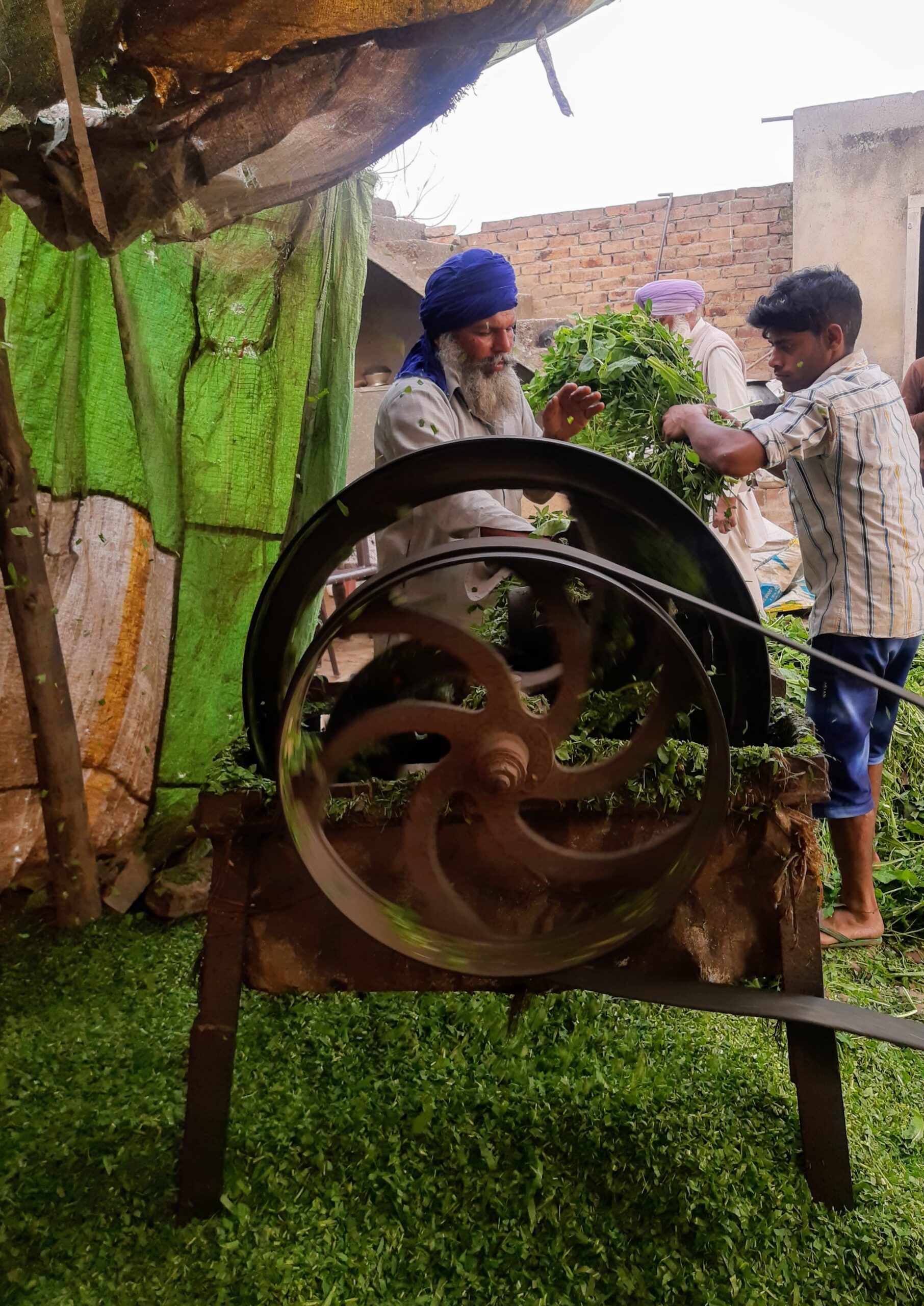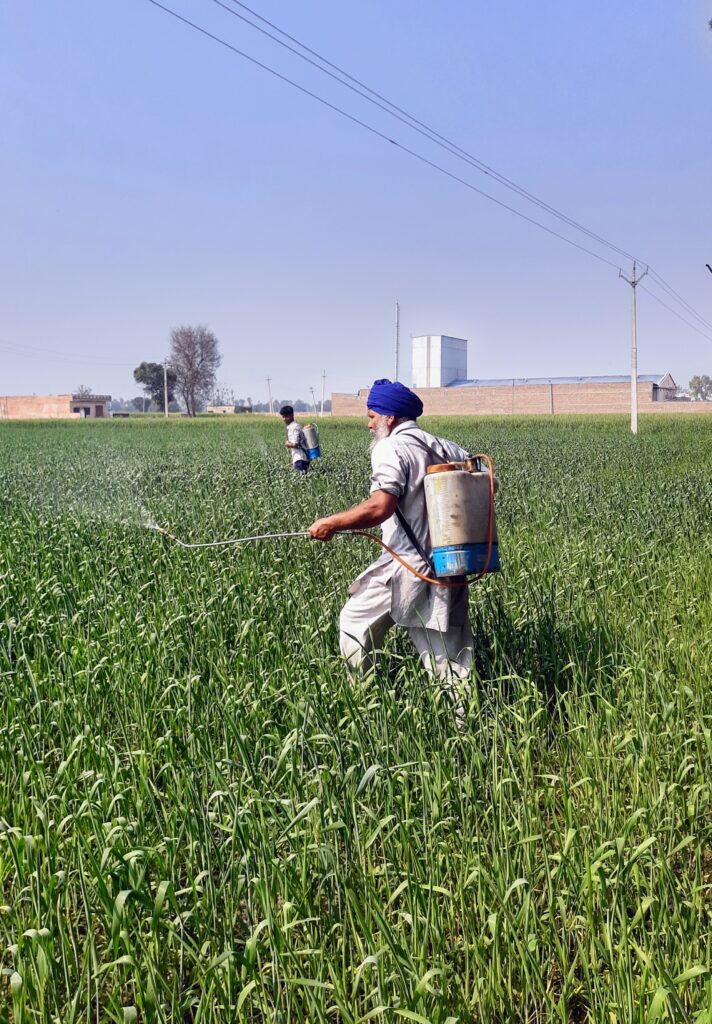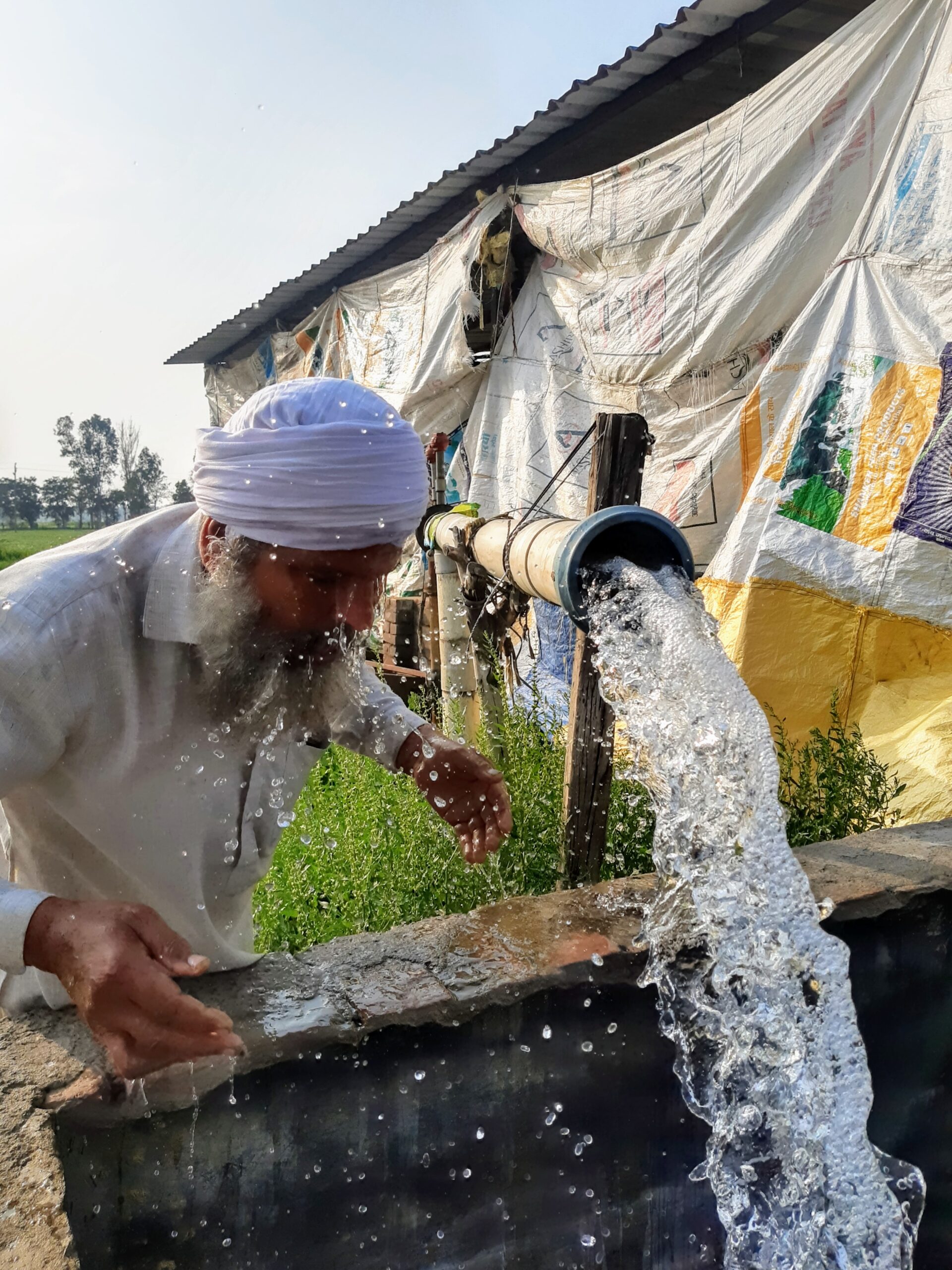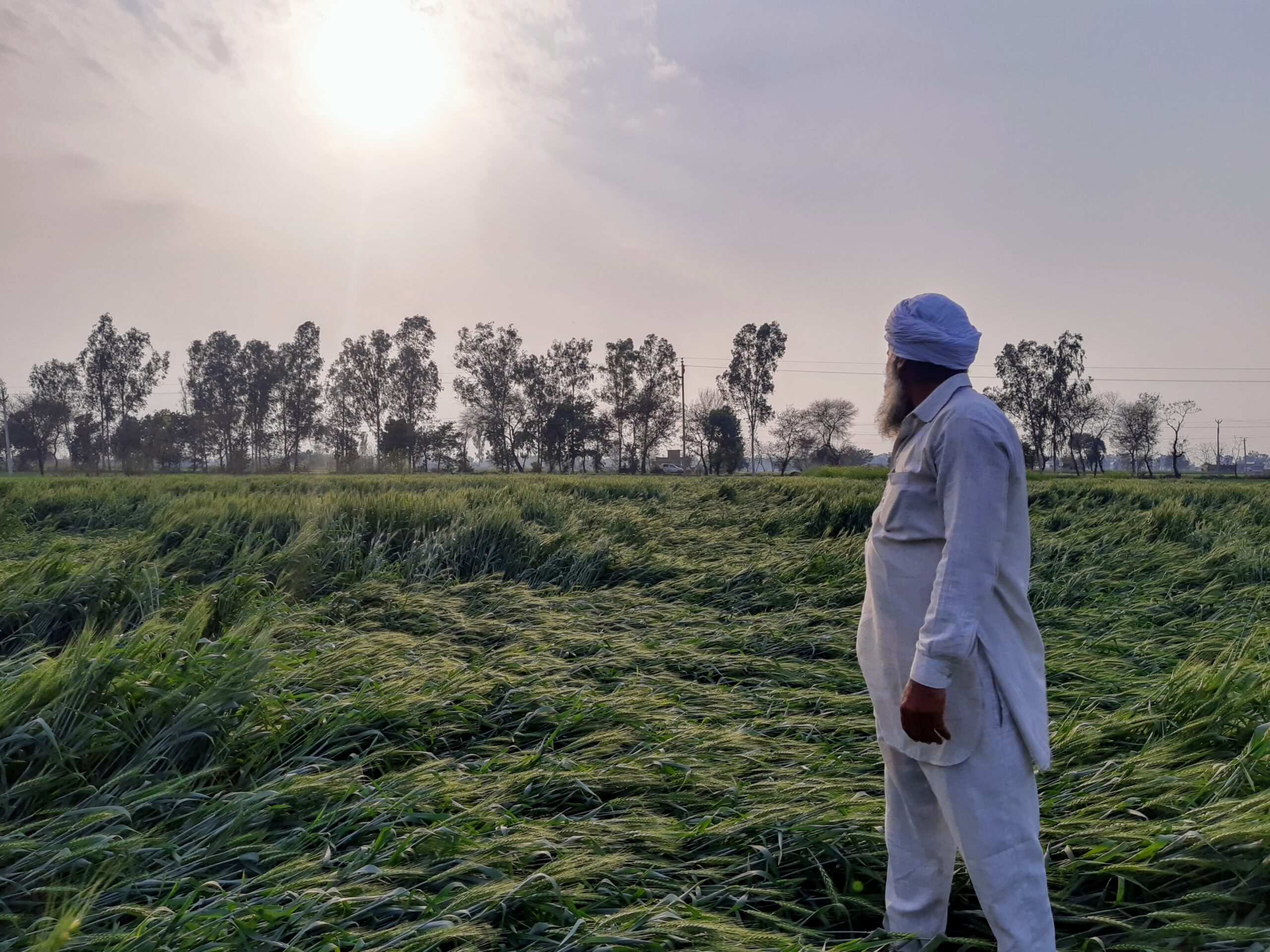Visuals By: Chirag Bhatia
Text By: Neha Chauhan

Sukwinder Singh (name changed), a farmer from Haryana, clearing the water channel in the field.
According to the projections from the World Population Review, India may have already surpassed China as the world’s most populous country [1]. With the rising population, the pressure on India’s agriculture and allied activities¹ will also increase. Besides being crucial for food and nutrition security, the agriculture and allied sectors are also critical for the country’s economic growth and the livelihood security of a large portion of the population.

Collecting crops planted from a small patch of family land.

Cutting crops using an old crop cutting machine.
The agriculture and allied sector accounted for 18.8% of the country’s total Gross Value Added at current prices [2]. Growth in allied sectors, including livestock, dairying, and fisheries, has been the primary engine of the sector’s total growth [3]. Additionally, the agriculture and allied sector employ over 50% of the workforce in India [4], and almost 70% of the rural households still rely primarily on agriculture for their livelihood [5]. For a large majority of agriculture households, the livestock sector is an essential aspect of their livelihood and accounts for around 15% of their average monthly income [6].

At the crack of dawn, Sukwinder woke up to make fodder for the livestock. It is a mix of flour, crops, and straw.

Sukwinder drawing up fodder for his livestock which is also his secondary source of income.
Other than playing an essential role in the country’s economic story, agriculture and allied activities are also significant contributors to greenhouse gas emissions [GHGs]. India is the third-largest emitter of greenhouse gases after China and the United States [7]. According to India’s third Biennial Update Report [BUR-3] to the United Nations Framework Convention on Climate Change [UNFCCC], the agriculture sector in India accounts for 14% of total greenhouse gas emissions, preceded only by the energy sector (44%) and the manufacturing and construction sectors combined (18%) [8]. The emissions within the agriculture sector are primarily due to the livestock sector in the form of methane emissions due to enteric fermentation (54.6%), rice cultivation (17.5%), use of nitrogenous fertilisers (19.1%), manure management (6.7%), and burning of crop residues (2.2%) [9]. According to a recent study that examined the carbon footprint of Indian agriculture, Uttar Pradesh was the state with the highest agricultural and livestock GHG emissions [10]. Andhra Pradesh had the greatest emissions from paddy rice cultivation, whereas Uttar Pradesh had the highest emissions from wheat production and buffalo production [11].

Spraying pesticide in the field is essential to keep crops free from pests and insects.

On a hot sunny day, Sukwinder uses water from tubewell after working in the field.
Given the significance of agriculture and allied sectors to India’s total emissions, these sectors must be prioritised for lowering GHG emissions while also meeting rising food demand. Given the emission hotspots in these sectors, there is a need to increase the efficiency of water use and fertiliser use. Furthermore, measures like zero-tillage agricultural farming and minimising crop residue burning aid in GHG mitigation. To achieve the goal of sustainable agriculture in India, stakeholders such as farmers’ groups, non-governmental organisations (NGOs), government authorities, and agricultural research institutions must collaborate and work together to scale the adoption of such emissions-reducing practices.

Sukwinder gazed at the partially destroyed crops by midnight rain and thunderstorms.
Endnotes
[1] Mukhopadhyay, S. (2023, January 18). India has surpassed China to become the most populous country in the world, as per estimates. LiveMint. https://www.livemint.com/news/india/india-has-surpassed-china-to-become-the-most-populous-country-in-the-world-as-per-estimates-11674022881859.html.
[2] Department of Economic Affairs. (2022). Economic Survey 2021-22. Ministry of Finance, Government of India. https://www.indiabudget.gov.in/economicsurvey/.
[3] Ibid.
[4] Department of Agriculture & Farmers Welfare. (2022). Agricultural Statistics at a Glance 2021. Government of India.
[5] Food and Agriculture Organization. (n.d.). India at a glance. https://www.fao.org/india/fao-in-india/india-at-a-glance/en/#:~:text=Agriculture%2C%20with%20its%20allied%20sectors,275%20million%20tonnes%20(MT).
[6] Department of Economic Affairs. (2022). Economic Survey 2021-22. Ministry of Finance, Government of India. https://www.indiabudget.gov.in/economicsurvey/.
[7] Carbon Brief. (2019, March 14). The Carbon Brief Profile: India. https://www.carbonbrief.org/the-carbon-brief-profile-india/.
[8] Ministry of Environment, Forest and Climate Change. (2021). India: Third Biennial Update Report to the United Nations Framework Convention on Climate Change. Ministry of Environment, Forest and Climate Change, Government of India. https://unfccc.int/sites/default/files/resource/INDIA_%20BUR-3_20.02.2021_High.pdf.
[9] Ibid.
[10] Sapkota, T .B., Vetter, S. H., Jat, M. L., Sirohi, S., Shirsath, P. B., Singh, R., Jat., H. S., Smith, P., Hillier, J., Stirling, C. M. (2019). Cost-effective opportunities for climate change mitigation in Indian agriculture. Science of The Total Environment, 655, 1342–1354. https://doi.org/10.1016/j.scitotenv.2018.11.225.
[11] Ibid.
[12] Ibid.
___________________________
¹ Allied sectors include sectors such as animal husbandry, dairying, and fisheries.
² Enteric fermentation is a digestive process that takes place in ruminant animals and produces methane as a by-product.
Chirag Bhatia is an independent photographer from Haryana, currently residing in New Delhi. He completed his graduation in Architecture from DCR, University of Science and Technology, Sonipat. Haryana. His main areas of interest are documentary, travel and architectural photography. He has previously won a number of photography contests such as Motorola Photography Competition. His work has been published and featured in Vice India, NatGeo India, Snapdragon In, Indo-Pak Photography Book and Retro Kolkata E-magazine, among others.
